Yellowstone National Park
A Photo Journal of America's First and
Best National Park
Article Date: January, 2015
Article and Photography by Mark Quasius
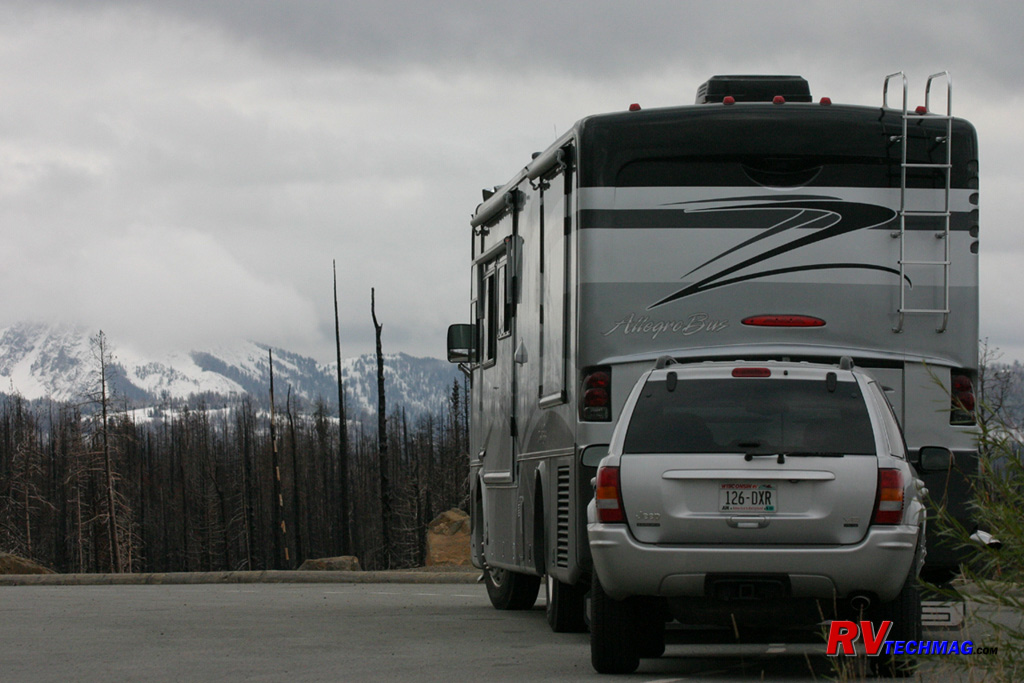
Norris
Directly south of Mammoth, about 21 miles on the loop road, lies Norris. Norris is a lesser known geyser basin than the Old
Faithful area but it is the hotbed of the park. This is the area of the park where the hot magma pocket is the closest to the surface. This heat is
responsible for a wide array of thermal features. This is the area of the park where the world's largest geyser, Steamboat Geyser, is found. Norris
has two geyser basins, the back basin is covered with many active geysers, hot springs, and fumaroles while the desolate Porcelain basin best resembles
a scene from a distant planet. This area is filled with the sounds and smells of thermal activity and is the most seismically active portion of the
park. Yellowstone is known for between 1,000 and 3,000 measurable earthquakes every year. While many of these can only be sensed with a seismograph,
there is a bit of rumbling in this area and the topography is in constant change. Every August this area features its "Annual Awakening" when the
underground plumbing has pretty much exhausted the influx of fresh snowmelt and things begin to rearrange themselves. Many new thermal features
appear and several dormant ones reawaken.
Approaching Norris from Mammoth requires a drive through the Golden Gate portion, an area where the road clings to yellow stone
cliff as it winds its way through the canyon. This road was rebuilt after landslides destroyed much of it during the 1959 Hebgen Lake earthquake.
Continuing on south you'll pass through forests with major meadows, such as Gibbon Meadows and Elk Park where numerous bison and elk herds can be seen.
Moose can be found in the marshy areas north of Roaring Mountain and Obsidian Cliff as well as grizzly bear in Spring and early summer. Leaving Norris
you'll pass through the beautiful Gibbon River valley and see Gibbon Falls on your way to Madison.

Elk Park
On the road between Mammoth and Norris are two large meadows, Gibbon Meadows and Elk Park. These meadows are frequented by Elk,
Bison, and Sandhill Cranes. This June image shows the bulls as they gather in bachelor groups. At this time of the year their antlers are covered in
velvet, which is shed in the fall. Mount Washburn lies in the distance.
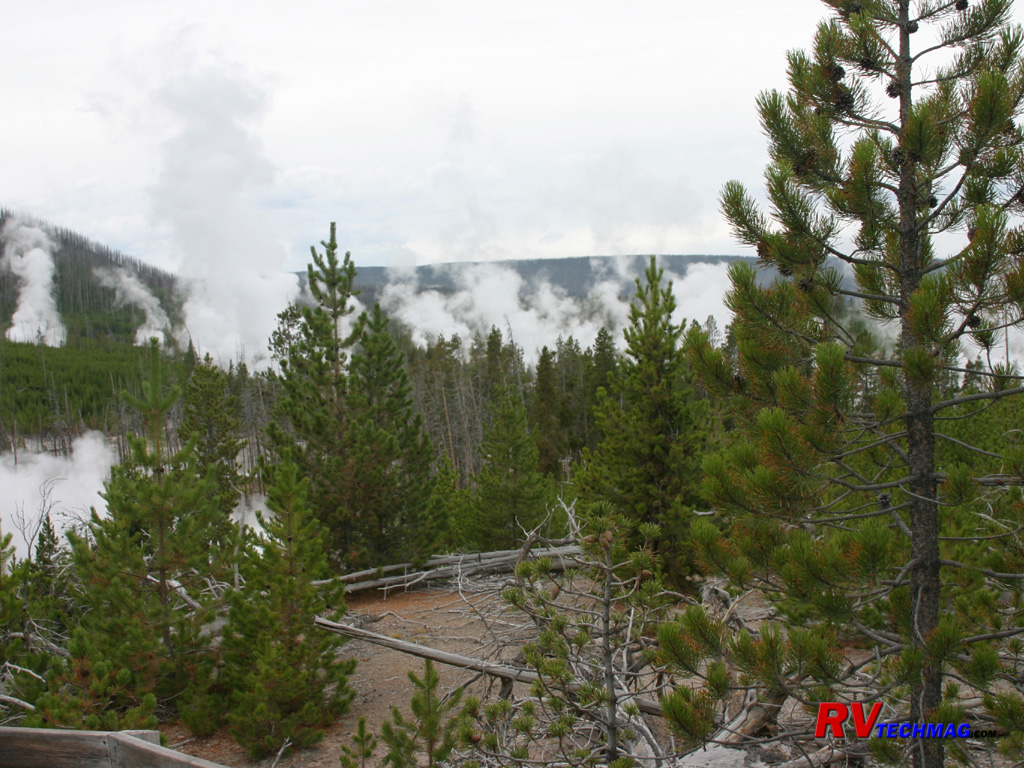
Norris Geyser Basin
Norris is a land of heavy thermal activity. This scene shows the many steam plumes rising from the various thermal features in
this area.

Back Basin
The Back Basin at Norris is the hottest spot in the park. Constant steam and boiling water flows create an extremely hot runoff
that blankets the area. To prevent breaking through the thin earthy crust that covers many pockets of scalding water, all visitors are required to stay
on the boardwalks that are provided for their safety.
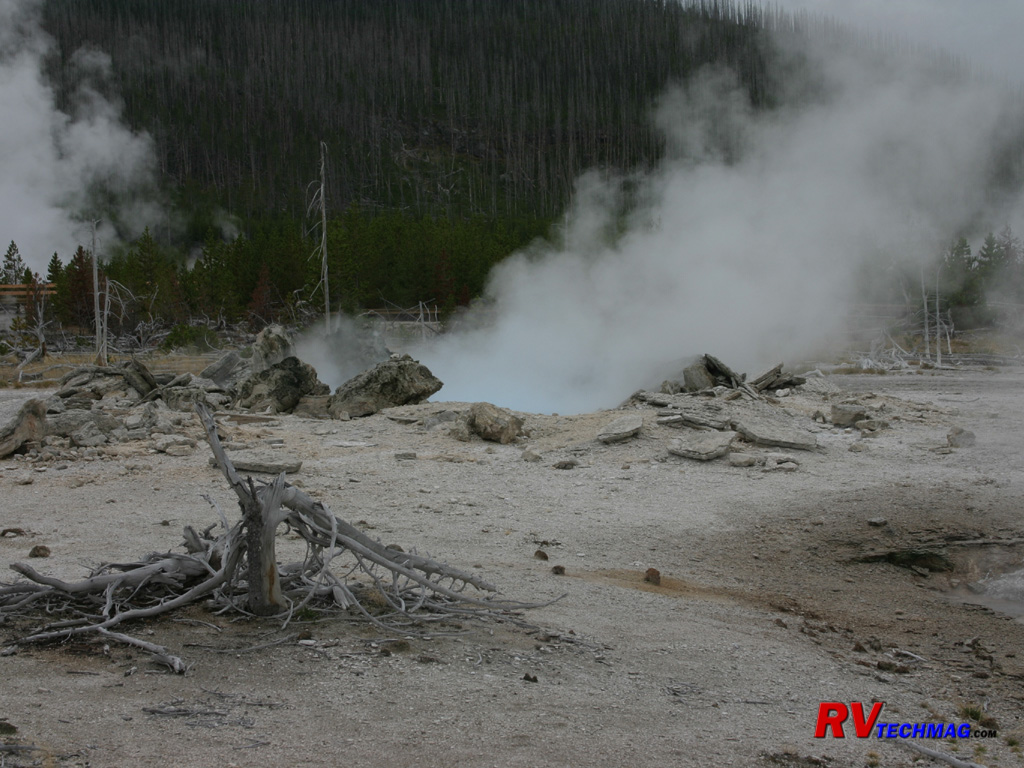
Pork Chop Geyser
Pork Chop Geyser, named for its distinct shape, was an active geyser that used to bubble constantly until 1989 when the geyser's
cone plugged and it blew up, scattering slabs of geyserite over the area. It was then dormant until the fall awakening of 2003 when the entire basin
underwent massive changes, requiring walking paths to be rerouted to prevent visitors from being hit by boiling mud in areas. Since then it has
continued its normal activity, at least for the time being.
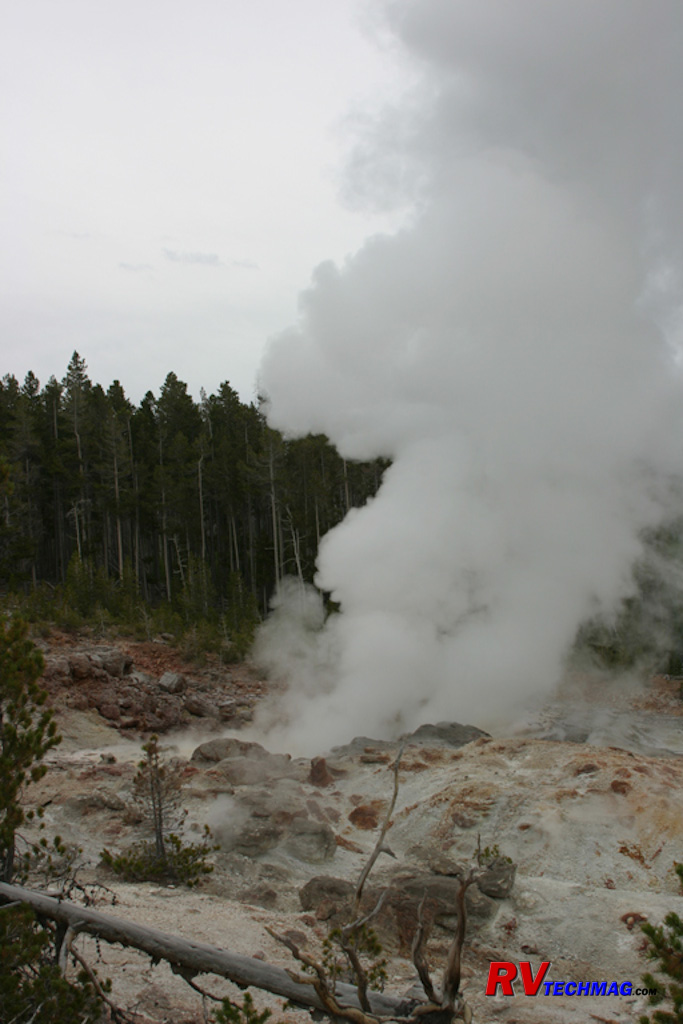
Steamboat Geyser
Steamboat Geyser is the world's largest geyser and is also the most unpredictable. It is the perfect symbol of the
unpredictability of the ever changing Norris area. After resting dormant for over 80 years, Steamboat finally erupted in May of 2000. After a brief
3 year rest it erupted again in March, April, and October 2003, and also May 2005. Steamboat begins with an earth shaking rumble and shoots water
over 350' into the air, showering anything in the immediate area with hot mineral water. After an approximate 45 minute shower, Steamboat settles
into a 3-4 hour steam phase that gives it its name as it roars away like an old sternwheeler.
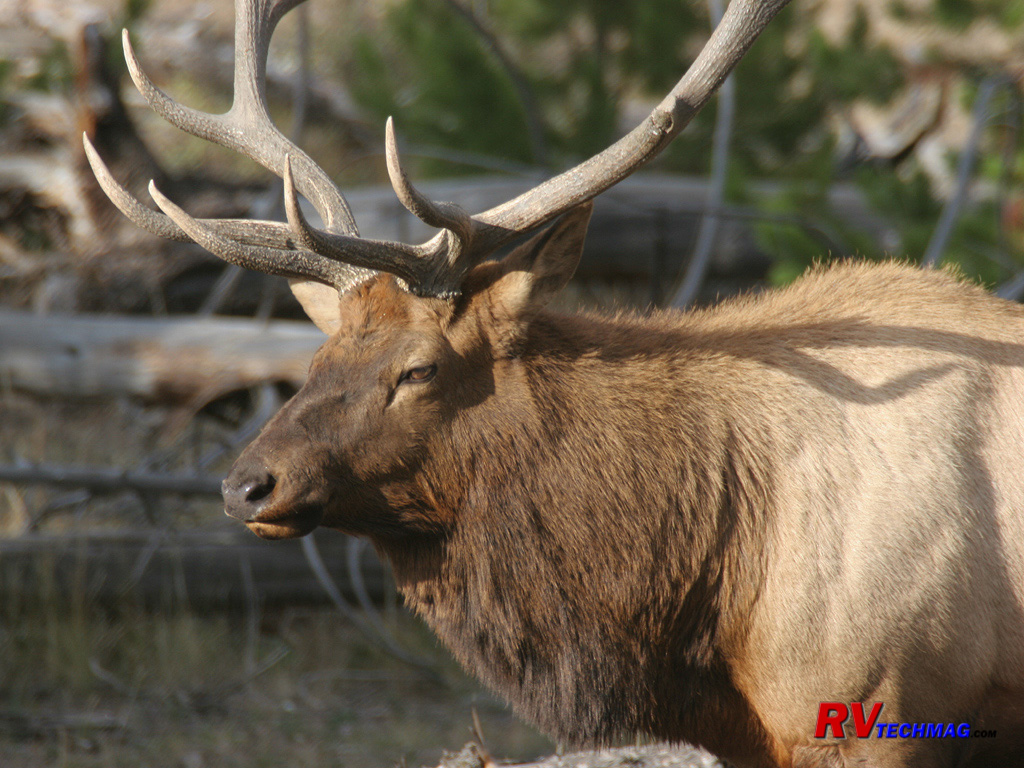
Bull Elk
In the fall, Bull Elk shed the velvet covering from their antlers as they prepare to do battle during the fall rut mating season.
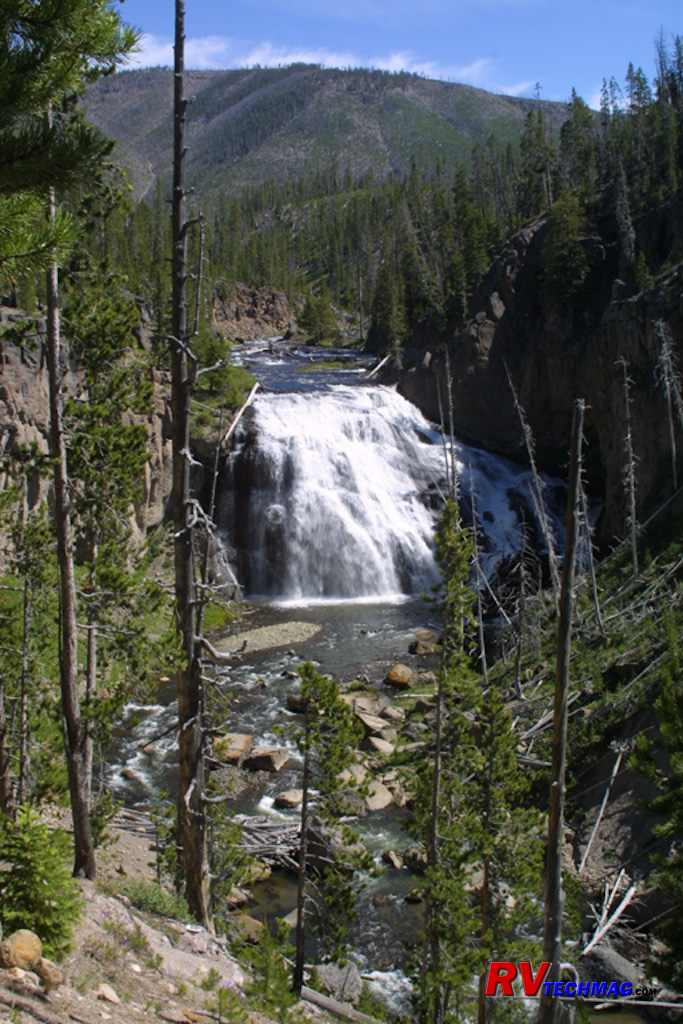
Gibbon Falls
Gibbon Falls is located on the Madison to Norris road. Its location showcases the Gibbon River as it crashes over the falls to
the valley below.
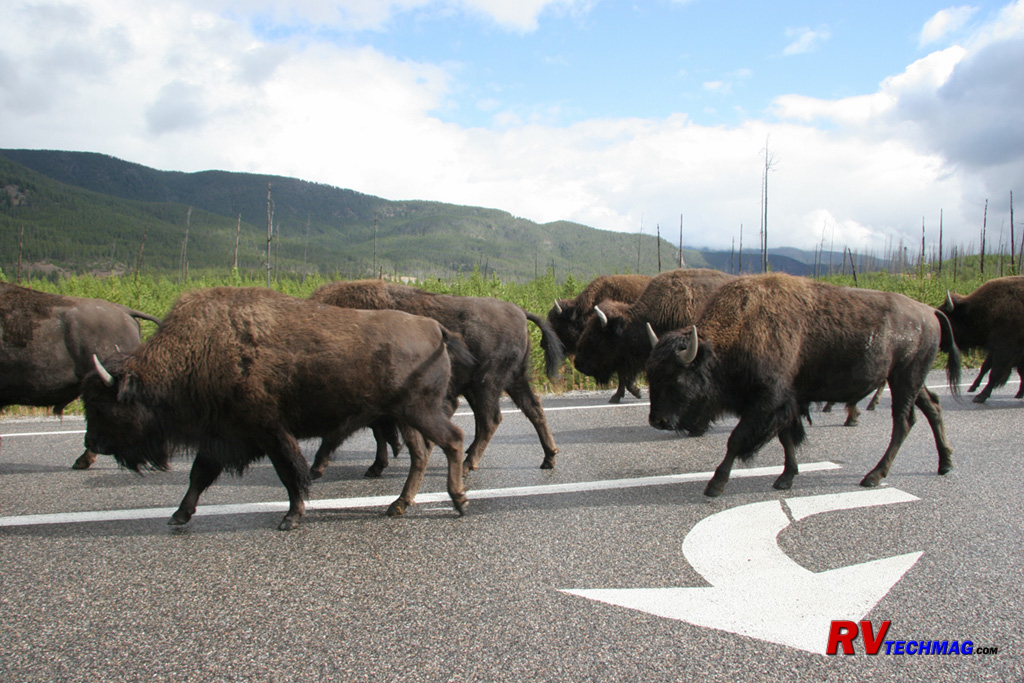
Bison Jam
Yellowstone's traffic is different than any other place. You have to be ready to sit for a while whenever bison herds take to
the road. Approximately 2,000 Bison in the park use the roads to move between grazing areas. If you are in tight surroundings you'll just have to
wait because they aren't in a hurry and you're not well equipped to argue with them.
Return to Home Page
If you enjoyed this article be sure to recommend RVtechMag.com to your friends, like us on Facebook or Twitter
or subscribe to our RSS feed.



|













